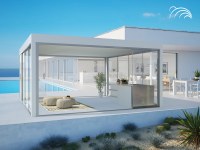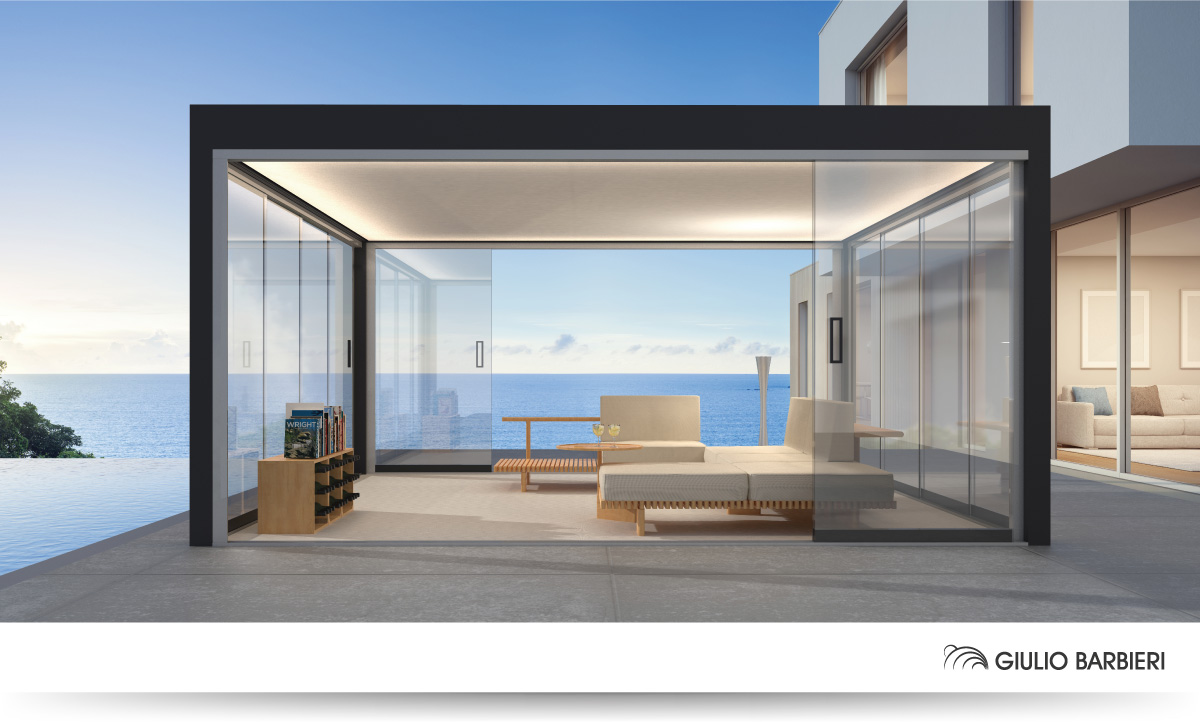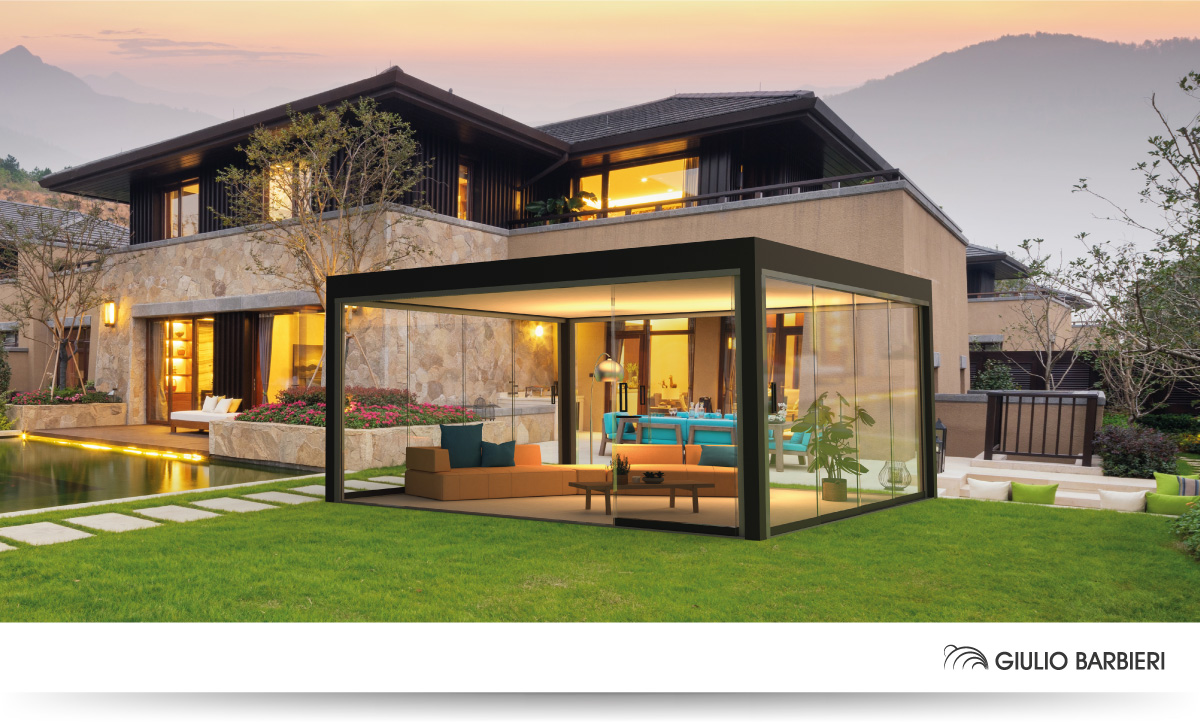Acoustic comfort: The importance of sound absorption in meeting the need for silence and privacy
We at Giulio Barbieri care about the serenity of our customers. For this reason, we have designed Eclettica, the new product that will be on the market in the next months, created to improve the experience of silence and aid deep relaxation. Never before has living comfort become a primary need: in our daily lives, we spend a lot of time ins closed environments, such as schools, offices, theaters, and restaurants, where environmental noise is high, and often results in high levels of fatigue, both mental and physical. Starting, therefore, from the observation of this discomfort, the design of an acoustic absorption system has become fundamental for us in order to ensure an excellent environmental comfort, especially during our customers’ leisure time and coveted moments of calm. In fact, through the attention to some essential conditions, like thermal comfort, acoustic well-being, and visual quality, we can find those pleasant sensations that allow us to live our lives well and healthily.
Wellbeing also involves silence: What prompted us to design a sound absorption system?
In architecture, silence plays a fundamental role: buildings are museums of time and silence. Architecture transforms time and can even create silence. Thus, to experience a building is not only to look at spaces, surfaces, shapes, and colors, but also to listen to its silence: a particularity is that it is unique to each building. If we go further, by listening to architecture, we are in fact listening to ourselves. It's an exercise in introspection. It's about practicing our way of perceiving the world; the design elements don't only have an aesthetic function, but they allow us to sublimate the small sounds that are good for our mood and ourselves, eliminating the more annoying noises that inhibit concentration and relaxation.
“Architecture sometimes seeks silence and emptiness in which our consciousness can find itself. Silence is a bit like darkness: you have to have the courage to look at it. And then, slowly, you start to see the outline of things. Architecture is, therefore, also the art of creating places for silence, for meditation.” Renzo Piano
In acoustics, reverberation is the phenomenon of reflection of sound waves on the surfaces of a room. The reverberation time is the permanence of sound in the given space. When the reverberation time is too long, the sound waves produced overlap and mix with each other, making the noisy environment redundant. An obvious consequence, for example, is the lack of understanding of phraseology between people facing each other. This reverberation or rumble increases progressively in a crowded room as each person present is forced to raise their voice to make themselves understood, triggering a mechanism that makes the noise discomfort they experience unbearable. The sound absorption systems adopted by Giulio Barbieri reduce the reverberation time. The fabrics and panels of sound absorption that we use have a high sound absorption coefficient.
The reverberation time in a room is the time it takes for a sound pulse generated in the room to become imperceptible.
The reverberation time is one of the most commonly used parameters to measure the indoor acoustic quality of an environment, as defined by the technical standard UNI EN 11532-2:2020.
The decree may be supplemented by other requirements defined by local legislation, regulations, and laws. Beyond legal limitations, in many environments it is more than appropriate to correct the internal acoustics to help people understand each other, such as rooms open to the public, including verandas or pergolas for bars, restaurants, canteens, and others.
At a regulatory level, the optimal levels of reverberation time are proposed by the standards UNI 11367 acoustic classification of building units and UNI 11532 internal acoustic characteristics of confined spaces.
At Giulio Barbieri, we were faced with a challenge: to create a space that meets new needs of customers, who are increasingly attached to the notions of aesthetic rigor and essentiality, combined with simplicity of use, but also the need to spend free time in a harmonious and pleasant place where peace reigns supreme.
Rigorous conceptual research has allowed us to create Eclettica, the new product of Giulio Barbieri, in which it will be possible to customize the structure with a roof composed of soundproofing panels, which significantly reduce acoustic reverberation and create a soundproofed environment. Eclettica is a synthesis of environmental comfort: a subdued light meets a respectful silence, creating an environment that satisfies aesthetic preferences, while being perfect for the concentration and the wellbeing of the person.
FOCUS ON: Eclettica
As we have already mentioned, in this historical moment, living comfort is a primary need: incorrect lighting or lack of glare control can cause subconscious stress that, over time, can generate impatience and discomfort. On the other hand, by paying attention to certain essential conditions such as acoustic comfort and visual quality, we can rediscover those pleasant sensations that make us experience the environment around us in a healthy and pleasant way.
The protection of environments from external noise is becoming increasingly important due to the growing public awareness of the problems posed by noise pollution.
For Eclettica, we designed a roof made of soundproofed panels that considerably reduce acoustic reverberation, breaking the noise and creating an acoustically muffled environment.
We have thought not only about acoustic comfort, but also about visual comfort, in order to guarantee a totally positive experience for our clients: the lighting will be perimetric and will cover the four sides of the structure in order to guarantee an optimal level of light, allowing the eyes the best visual perception of the environment through a subdued and non-dazzling luminosity, ensuring the correct lighting of the structure.
Specifically, we will use the following:
• Fabric: formed by a class-1 fire-resistant membrane made of PVC-coated polyester. The manufacturer is Serge Ferrari, a leading company in the production of fabrics used for the construction of stretched structures and, in general, functional structures for garden furniture.
• Soundproofing panels represented by a single panel coupled with mineral wool underlay to ensure discretion and guarantee a minimalist design with attention to every little detail.
The range of warm colors and the matte finish with baked thermosetting epoxy powders increase the quality of the product and its resistance to wear and tear over time, giving Eclettica a harmonious appearance, in perfect harmony with the natural elements.
There is also the possibility of customization: the structure can be completed with the installation of numerous accessories, such as sliding PVC or glass perimeter closures, drop curtains, and decorative curtains.
Eclettica is a technological synthesis that meets the growing demand for total environmental comfort that satisfies all the senses, including hearing.
Giulio Barbieri continues his daily commitment to support and promote the search for the right balance between the health of the environment and the people living in it.


